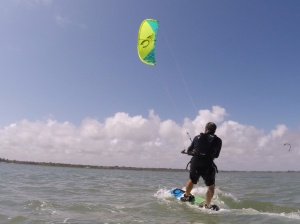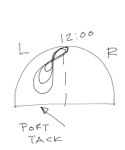Recently a couple of our young friends began competing in surf and SUP events. Hearing this always inspires me to want to help. I remember competing when I was 14 in ESA contests in the 70’s then again in the 90’s and for many years I sat in a judges seat heat after heat watching the action go down, calling colors and scratching down scores.. Free surfing and competitive surfing require two different types of thinking. If you go to a contest and spend $50 on an entry fee and go out in your first heat expecting to just free surf for 15 minutes, you’d be better off spending that money taking your girl to Outback. But if you want to advance all the way to the finals and surf the main event? Your head needs to be a deeper place entirely. You need to take action! So in no particular order here are some things to think about. Not all of these tips come from the perspective of a surfer in the line up, but also from the judge who sat watching good riders loose valuable opportunities to go further if it wasn’t for just a few small details.
Be prepared: From the time you arrive in the morning check the heats board and schedule regularly for when you will be riding. Those times can change through out the day so check often. Pick up your jersey as early as you can and put it on. You should be sitting at the waters edge a full heat (15 mins, ) before your heat goes out. Use this time to watch the heat before yours and pick up on things like where the best waves are breaking, is there a current? Do you need to walk up the beach before paddling out? If so,that takes time, don’t spend 3 mins. of your 15 running up the beach after the horn blows. Stretch. Relax.
Understand the rules: usually at each event there will be a meeting, and during that meeting the organizers will explain what is expected from each competitor, how to score the highest points, interference rules, flag colors and sequence, etc. These rules can be very important to your strategy, especially wave counts. You may be catching a lot of waves in one heat and if your best wave… A 9.5 is your 11 th wave, guess what… No score for you if there is a limit of 10 waves per heat. Some rules call for riders to catch at least 4 waves to advance out of a preliminary heat. If you catch 3 waves and score 7, 6, 8. And a another competitor catches the minimum 4 waves required with scores 2, 4, 3, 2 guess what, he advances, and you don’t. Some times it is just a matter of turning around and catching some white water and jumping to your feet that will get you to the next heat not a 6 second barrel.
Wave selection and Timing : So you’re out there in the line up and you have only 15 mins. to impress the judges. That is not much time, so first, if you can, try to avoid sitting next to other competitors in the line up. If there are good waves everywhere spread out so you don’t get into an interference situation. It costs time and you can get frustrated and it can wreck your mood.
Of course we all want to catch the best waves out there, that is no dought the goal. But most of the time those come after your heat! The next goal is to catch your minimum required. On days when there are lots of waves, say S.E. wind chop, you can be a little more selective and picky. One strategy would be to catch a few early in the heat then become selective, spend more time looking for a wave that will give you a longer ride. But watch the time, if you have 5 mins. left and you have only caught 3 waves… It may be time to move in and catch that white water.
Some long period swells arrive to the lineup infrequently,and you may be lucky to catch 4 waves in your heat. In that case you need to be less picky and catch what ever you can. This is the ugly side of contest surfing but remember, when you are riding in crappy surf…so is everyone else.
Wave riding: Now to the fun stuff. During the riders meeting they usually describe what it is that they are looking for to score high points, things like being in the proper location on the wave, sharp turns, difficult maneuvers etc. but what it comes down to is this, you should ride a wave in the most comfortable manner that you can, because the longer you ride a wave the more impressive it is, and the more opportunities you will have to perform more maneuvers. When it comes to difficult moves it’s your call. Go for it and risk eating it, which by the way counts for nothing or being more conservative and pulling it off for the sake of a successful ride. These are decisions made in a split second where the contest is won or lost.
Have an advocate: Judges have a hard time keeping track of who is up and riding when many riders are up at once. And sooner or later their attention can wander as well. ( it takes a lot of discipline to remain focused for 6 to 8 hrs ) it is a good idea to have a friend or family member sit close to the judges tent and “Spot ” for the judges. When you catch a wave your spotter should shout “Blues up! ” not your name, they may not know who you are. The judges don’t mind this kind of thing, in fact most find it helpful. Without a spotter there could be two riders up and all eyes are on them. You drop into another 6 second barrel and guess what… There are no witnesses! But seriously, heats and contests are won by just a couple of points sometimes, so every one counts!
Visability : the contest area you surf in is like a stage. The judges sit at the center of that stage. From our perspective things that happen closer to us seem more impressive than rides that we see 50 yards away, if we see them at all. You can’t always be at center stage. Just try not to get too far away.
Free surfing before your heat: You should always go out for a surf to warm up. But don’t spend hours out there getting fatigued. And as conditions change through out the day you should go out a few times but again not for long.
Spotting or judging: One of the best ways to learn about competitive surfing is to see what the judges see. If you can volunteer to spot or judge do so. You will gain a whole new perspective.
Some tips on controlling the line up: Part of the fun of surfing heats is not just the wave riding but what goes on to catch those waves. Jockeying for position and possession of waves is a game unto itself. First, you must be confident! Never be indecisive! If you see a wave you want, paddle hard for it, even if others are paddleing for the same wave. Pretend they do not exist. Even if they have right of way, for one thing you never know if they will catch it or not. Only at the last second should you sit back and let your competitor drop in. This will let them know you are serious. Respect is earned through action. Don’t paddle for waves then fail to catch them.
One way to break up a crowd or get someone off your hip ( and this will only work once , so use it sparingly ) is to act as though you see a clean up set coming in, and start paddleing for the horizon. If you sell it right and at the right moment, others will follow you out into deep water beyond the point where the sets are breaking. Then casually turn and paddle back to the line up. If you time it right they will be too far out to catch the waves and you’ll have the set to yourself.
Another move is to act as though you want the first wave in the set. Competitors love to scrap over waves, once they are committed to catching the wave just sit up and let them have it, then make your move on the second wave in the set. Without anyone else around there is less tension when catch that wave and less tension should leave you with a more relaxed start to your ride.
When ever possible, be selective about the waves you catch. If it looks like the wave is going to close out, don’t catch it. You will loose valuable time paddling back out and gain very little from a score of 2.
Performance: I think a lot of kids have a misconception of what it takes to win heats. Huge airs, 360’s, the stuff we see in all the videos. Those moves are impressive and do score high points, but only IF they are done successfully, and at the proper time. And only paired with good wave riding skills will those moves prove effective. The fundamentals are what go furthest. Catching a wave at its peak. Being in the right place at the right time on the waves face, and knowing what to do when you are there. Utilizing the entire wave top to bottom, shoulder to pocket. Being able to develop speed for powerful turns and knowing how to shed speed when that’s appropriate . And of course looking comfortable and balanced the entire time. Taking everything you can from the wave until the wave has nothing more to give. That… Is what makes a show! And that…Is what gets judges excited!
We all wish we could surf like Slater, pull off anything, make it look flawless. And indeed those pro riders should be every competitors inspiration. They are at the top of the ladder that you are also on. But it is a very tall ladder. In the end competition should be good clean fun. A way of challenging ourselves to do better, or maybe just a reason to get excited about waking up early on a Saturday morning.


